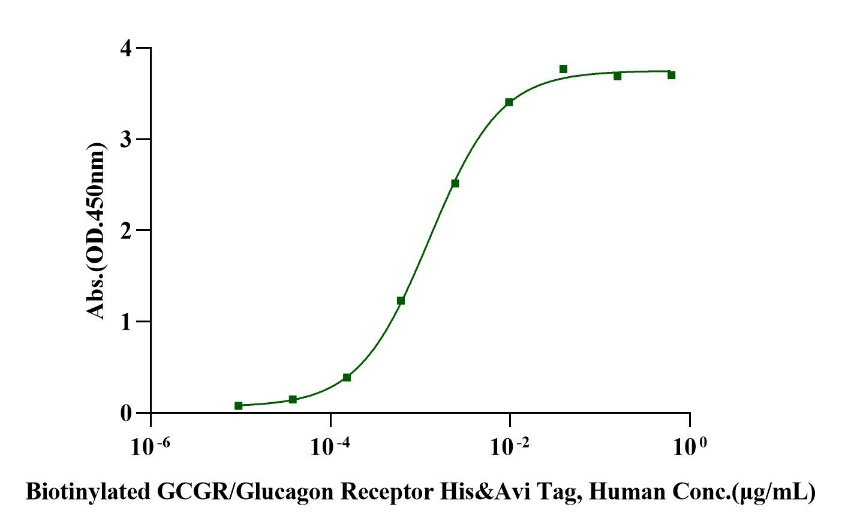30-43kDa (Reducing)
Reconstitute at 0.1-1 mg/ml according to the size in ultrapure water after rapid centrifugation.
1. Michelle L. Boland, Rhianna C. Laker, Karly Mather, Arkadiusz Nawrocki, Stephanie Oldham, Brandon B. Boland, Hilary Lewis, James Conway, Jacqueline Naylor, Silvia Guionaud, Michael Feigh, Sanne S. Veidal, Louise Lantier, Owen P. McGuinness, Joseph Grimsby, Cristina M. Rondinone, Lutz Jermutus, Martin R. Larsen, James L. Trevaskis & Christopher J. Rhodes: Resolution of NASH and hepatic fibrosis by the GLP-1R and GCGR dual-agonist cotadutide via modulating mitochondrial function and lipogenesis. Nature Metabolism volume 2, pages413–431 (2020).
The glucagon receptor (GCGR) is a Class B GPCR that has an important role in maintenance of glucose homeostasis and, as such, is considered to be a valuable target for the treatment of diabetes. The GCGR is widely expressed and can be found in the liver, adipose tissue, heart, kidney, pancreatic islets, stomach, small intestine, thyroid, and skeletal muscle. The GCGR is coupled to the activation of adenylate cyclase via Gs, with concomitant rise in cellular cyclic AMP levels and activation of protein kinase A (PKA). GCGR mRNA has been detected in islets. In vitro/ex vivo studies suggest that glucagon potentiates insulin secretion from isolated islets, although the potency is considerably less than that of the insulin secretagogue GLP-1. Mutations of the GCGR gene are associated with congenital noninsulin-dependent diabetes, and inhibition of GCGR in vivo lowers blood glucose and improves glucose tolerance in obese diabetic mice.
1μg (R: reducing condition, N: non-reducing condition).

Immobilized Crotedumab (Cat. No. UA011042) at 2.0μg/mL (100μL/well) can bind Biotinylated GCGR/Glucagon Receptor His&Avi Tag, Human (Cat. No. UA010883) with EC50 of 1.10-1.46ng/mL.